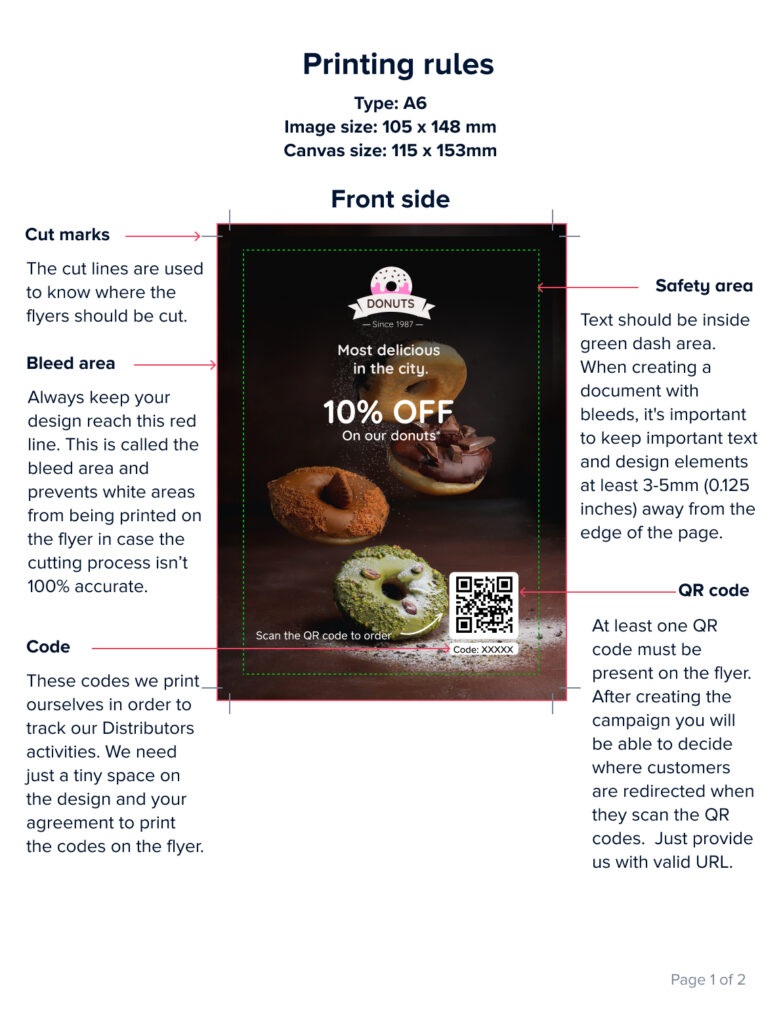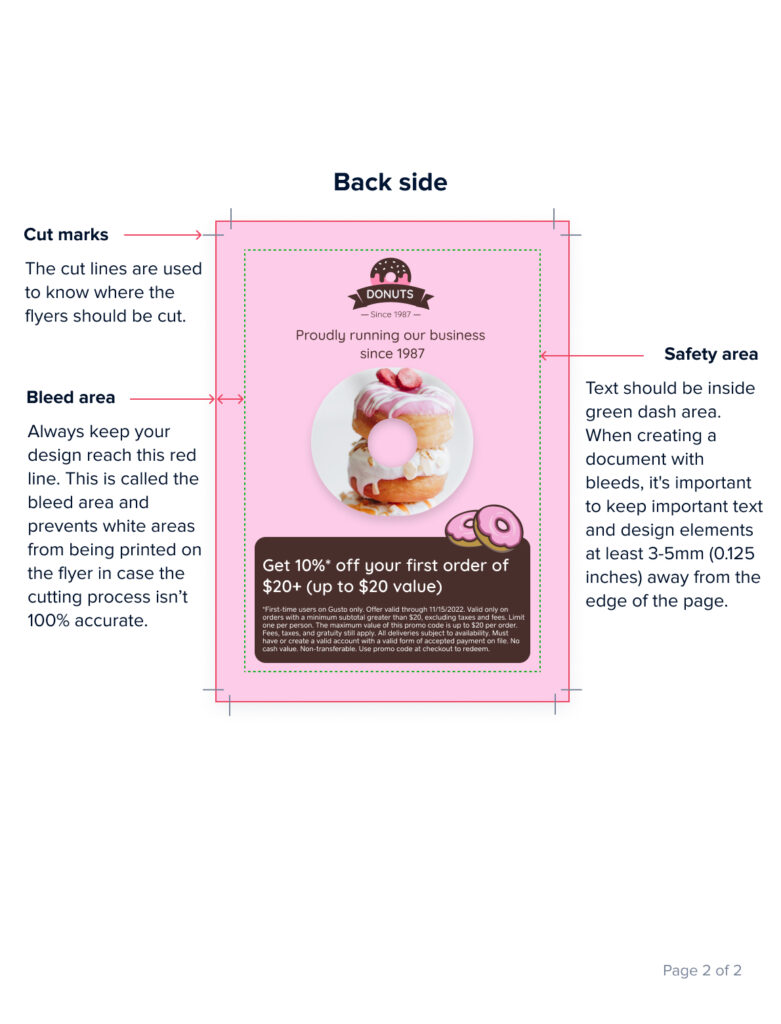- Flyer Formats
Flyer Formats
- Getting started
- Account
- Create Campaign
- Design
-
Flyering and Door to Door
- Audience
- Flyer builder
- Upload design
- Details
- Review and Submit
- Quotes and fees
- Live Campaign
- Flyer Formats
-
Every Door Direct Mail
- Segments
- Upload Design
- Details
- Review and Submit
- Live Campaign
- Printing Rules
- How we work
-
BAs and Mistery shoppers
- What is the process for selecting Brand Ambassadors (BAs) for my campaign?
- Is it possible to request Brand Ambassadors (BAs) who speak a specific language for my campaign?
- What is the training process for Brand Ambassadors (BAs)?
- Is it possible for me to use my own mystery shoppers as part of a campaign?
- Why does Oppizi pay bonuses to its Brand Ambassadors (BAs)?
-
Distribution
- What is involved in the planning process for a campaign and how long doest it typically take?
- Does Oppizi provide branded uniforms or other promotional materials for Brand Ambassadors (BAs) to wear during campaigns?
- How can I calculate the number of missions for my campaign?
- How many flyers can you distribute per day, week or month?
- Why do I need to provide codes? Why are they important?
-
Quality/Control
- How are the missions supervised?
- How do you ensure that Brand Ambassadors (BAs) are promoting my product or service effectively?
- What measures do you have in place to prevent cheating or unethical behavior from Brand Ambassadors (BAs) during campaigns?
- How does Oppizi track the number of scans during a campaign?
-
FAQ
- What is a client pitch and what information does it typically include?
- What can I do on the Software once a campaign is live?
- When can I expect my campaign to start and what factors may impact the start date?
- Is it possible for me to use my own printer as part of my campaign?
- What are my options if I want to pause or cancel my campaign?
What should I be aware of when creating my artwork?
There are a few key concepts and terms that you should be familiar with when creating your artwork for a marketing campaign:
- Bleed area: The bleed area is the extra space added to the edges of your design file. It is designed to ensure that your artwork is printed all the way to the edge of the final product, without any white spots or unprinted areas. When your design is printed, it will be trimmed down to fit the final size of the flyer or other materials.
- Trim zone: The trim zone is the finished size of your materials after they have been trimmed down from a larger sheet. Any artwork that extends into the bleed area will be trimmed down to the size of the final product.
- Safe zone: The safe zone is the area within your design that is 1/8" from the edge of the final size. It is suggested to place the most important content within the safe zone to ensure that it is not trimmed off during the printing process.
Understanding these concepts and terms will help you create effective and professional-quality artwork for your marketing campaigns.


What options do I have for flyer formats in my campaign?
There are different flyer formats that you can choose to your campaign
| Format | Safe area | Pixel (96 dpi) |
|---|---|---|
| A6 | 105 X 148.5 mm | 4.378 x 540 px |
| Door hanger | 4.14 x 10.89 in | 398 x 1046 px |
| DL | 96 x 207 mm | 363 x 782 px |
| Tearaway | 52 x 142 mm | 197 x 335 px |
What thickness are there?
There are two thickness options available: 250 grams and 300 grams.
250 gram paper is a relatively lightweight paper that is suitable for printing flyers, brochures, and other marketing materials that will be distributed to a large number of people. It is also suitable for printing documents that will be mailed, as it is lightweight and easy to handle.
300 gram paper is a heavier paper that is suitable for printing high-quality marketing materials, such as brochures and brochures with a lot of images or graphics. It is also suitable for printing documents that will be used for presentations or as part of a professional image, as it has a more premium feel and appearance.
Ultimately, the decision on which thickness to choose will depend on your specific marketing needs and the type of materials you want to print. Consider factors such as the intended use of the materials, your budget, and the impact you want to make on your target audience.
